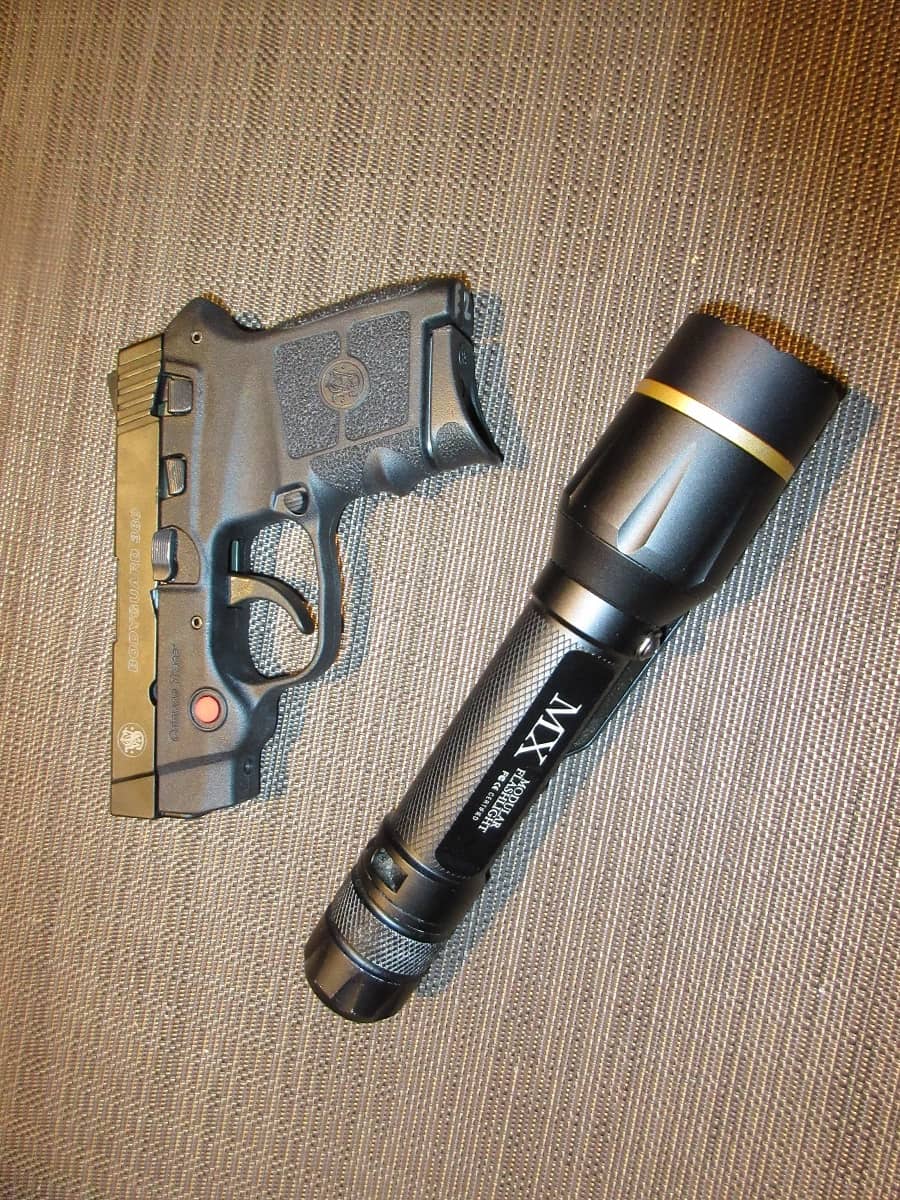A Shot in the Dark
OutdoorHub Contributors 10.19.15

There’s no denying that many Americans are better prepared to defend themselves with firearms than possibly any time in our nation’s history. Or are they?
Those gun-owning Americans spend hours each day at the gun range shooting, tweaking gear, and improving their shooting skills. Those days at the range, however, could be leading those gun owners in the wrong direction or providing a false sense of security. Statistics indicate criminal elements like darkness when they choose a time to prey on victims. All the recent riots and lootings that were covered on TV generally occurred under the cloak of darkness. Those average nine hours of darkness each day—or night—are a factor to be reckoned with. They can hold quite a few surprises.
Concealed-carry and self-defense minded folks are generally surprised (or shocked and stunned) when they first fire a shot from a pistol or long gun at night. In total darkness, it is far more challenging to find the safety or fire selector switch, unsnap a holster strap, align your sights, and other “normal” shooting processes. In darkness, the actions needed to operate a firearm must be done by feel and memory since they can’t been seen. The dark holds other challenges.
If you can operate your firearm in the dark, a blinding flash appears when a shot is fired. The resulting light can disrupt night vision in some shooters, and becomes more challenging if multiple shots are fired. Lighting up the night when the trigger is tugged can create challenges.
I’ve heard numerous first-time shooters on gun ranges at night just freeze and meekly ask “what was that?” or “what happened?” They have never seen a gun discharged in darkness—and the resulting flames. To be better prepared to defend yourself in low light and dark conditions, make plans now and take the time to shoot and train in darkness.
First, finding a place to shoot at night could be a challenge. Most gun ranges close 30 minutes before dark because of local noise ordinances or other agreements. Many indoor public ranges refuse to reduce or eliminate their lighting. Some ranges have and rent tactical bays, and you can often shoot here in darkness without lights. Shooters in darkness discover simple tasks are much more difficult, and reloading or removing a stovepipe in a pistol becomes a monumental task during the dark if not prepared.
One solution for shooting at night is finding a place to safely shoot on private property. If you are going to shoot on private property, check with local law enforcement agencies to be certain it is legal to shoot after the sun sets. Scout the site where you will shoot in daylight and establish zones of fire and backstops. Commit the surroundings to memory, and be there in daylight on the day you will shoot to be certain the selected site is safe. As a backup, determine where to place safety equipment (range bags, table, gear) or to park a vehicle. Many law enforcement agencies train at night and begin by shooting in daylight, then during low light at dusk, then with the aid of vehicle headlights shining in the background into the direction the shooters are shooting, and finally all lights out in total darkness. This process helps shooters grow gradually become acclimated to the bright flash that often follows a shot in the dark.
Having a bright flashlight tucked into a back pocket and a steady source of light like an LED lantern aids in the event something goes wrong and light is needed. That lighting also helps with clean-up and to determine that all gear, magazines, and other items are recovered before leaving the shooting site. Remember than once a light is activated, however, night vision (the adjustment of your brain to interpret the details your eyes relay) will be compromised. Plan and light accordingly.
In darkness, there is an upside. Most shooters find their other senses (hearing, feeling wind on the skin or vibration through the feet, fingertip senses, etc.) become heightened. Your body offsets the lack of sight.
Darkness also means you will not be able to see sights—period. This where a laser sight helps. If you decide to use a handheld flashlight to illuminate any danger, practice your holding technique and how to shoot should the light fail or get dropped. Again, you will be working in a degree of darkness.
Finally, if you do find a place/location to shoot in darkness, and decide to practice with a firearm, set goals. A minimum would be unholstering from the concealed-carry position then shooting a cylinder or magazine of ammunition through your concealed carry or self-defense firearm. Then reload. Just going through that process helps you know more of what to expect or do if you have to use a firearm and defend yourself and your family in the night.
And you’ll see the light!

